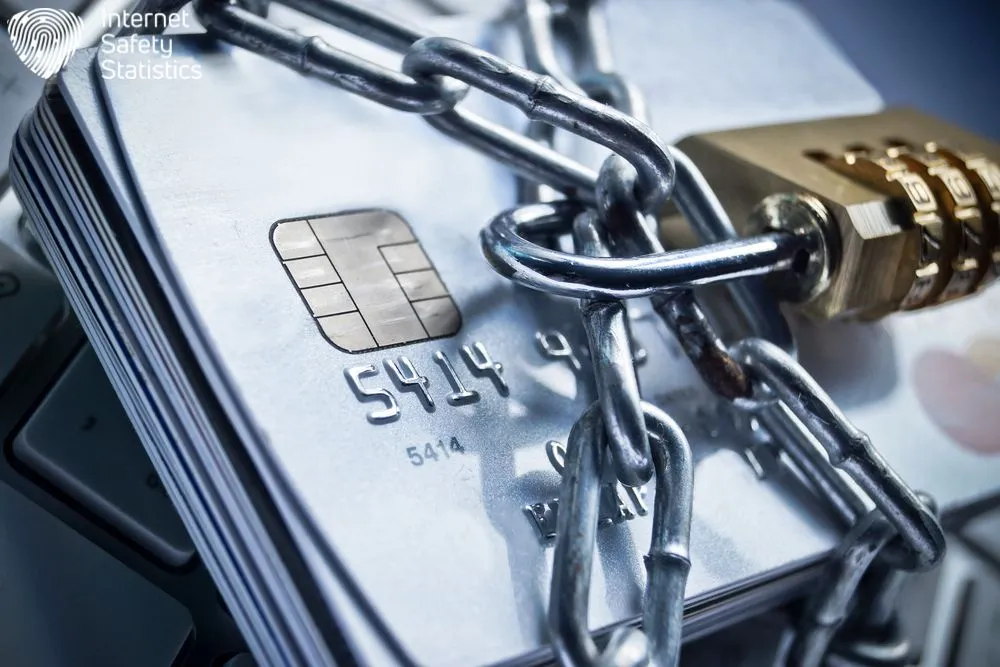
Ever entrusted your hard-earned savings to a bank but wondered who exactly gets to see where it goes? Understanding your bank privacy rights can feel like navigating a financial labyrinth, especially in the context of bank privacy laws. Fear not! This article cuts through the jargon to shed light on the key laws protecting your financial information. We’ll demystify what data banks collect when they can share it, and how you can control your financial footprint. So, buckle up and take charge of your bank privacy journey!
Understanding Bank Privacy Laws: How is My Financial Data Protected
Bank privacy laws are regulatory measures designed to safeguard the confidentiality and security of customer information held by financial institutions. These laws address concerns regarding the collection, use, and sharing of personal and financial data, aiming to protect individuals’ privacy rights and prevent unauthorised access or misuse of sensitive information.
Historically, the need for bank privacy laws emerged alongside the growth of the banking sector and the increasing digitisation of financial transactions. Early concerns centred around the potential for abuse of customer data by financial institutions or third parties, leading to calls for legislative action to establish clear guidelines and safeguards.
Over time, significant milestones have shaped the evolution of bank privacy laws. One notable example is the Gramm-Leach-Bliley Act (GLBA) of 1999 in the United States, which introduced comprehensive privacy provisions governing the handling of consumer financial information by banks, securities firms, and insurance companies.
The GLBA established requirements for financial institutions to inform customers about their privacy policies, provide opt-out mechanisms for sharing personal information with third parties, and implement safeguards to protect data security.
The scope of bank privacy laws encompasses various aspects of information protection. This includes personal data such as names, addresses, social security numbers, and financial data such as account numbers, transaction history, and credit card details. These laws typically apply to a wide range of financial entities, including banks, credit unions, brokerage firms, and insurance companies, regardless of their size or business model.
Moreover, bank privacy laws often have extraterritorial reach, meaning they may apply to foreign financial institutions operating within a country’s jurisdiction or handling the data of its residents. This global dimension reflects the interconnected nature of the financial system and the importance of maintaining consistent standards for data protection across borders.
Key Components of Bank Privacy Laws

The key components of bank privacy laws encompass various provisions aimed at protecting the confidentiality, integrity, and security of customer information held by financial institutions. These components include the following:
Privacy of Customer Information
- Requirement for financial institutions to maintain the privacy of customer information.
- Prohibition against unauthorised access, disclosure, or use of personal and financial data.
- Obligation to establish and maintain policies and procedures to safeguard customer information from unauthorised access or misuse.
Restrictions on Sharing Customer Data
- Limitations on the sharing of customer information with third parties.
- Requirement to provide customers with notice and opportunity to opt out of certain information-sharing arrangements.
- Exceptions for sharing information with affiliates, service providers, and in specified circumstances outlined in the law.
Customer Rights and Control
- Right of customers to access and review their personal and financial information held by financial institutions.
- Right to request corrections or updates to inaccuracies in their information.
- Ability to opt out of certain information-sharing practices or marketing activities.
Data Security Measures
- Mandate for financial institutions to implement safeguards to protect customer information against unauthorised access, use, or disclosure.
- The requirement to assess risks to the security and confidentiality of customer information and implement appropriate measures to mitigate those risks.
- Guidelines for data encryption, access controls, employee training, and incident response planning.
Notification Requirements
- Obligation to notify customers in the event of a data breach or unauthorised access to their personal or financial information.
- Requirement to notify regulatory authorities and other relevant parties within specified timeframes and in accordance with applicable laws and regulations.
Enforcement and Penalties
- Establishment of enforcement mechanisms to ensure compliance with bank privacy laws.
- Authority for regulatory agencies to investigate complaints, conduct audits, and impose penalties for violations.
- Penalties may include fines, sanctions, corrective actions, and reputational damage for non-compliant financial institutions.
- These key components collectively form the framework for bank privacy laws, providing a comprehensive set of rules and requirements to protect customer information and uphold individuals’ rights to privacy and data protection within the financial sector.
Major Bank Privacy Laws
Several major bank privacy laws have been established to safeguard the confidentiality and security of customer information within the financial sector. These laws provide a framework for financial institutions to collect, use, and share personal and financial data responsibly while ensuring the protection of individuals’ privacy rights.
Key among these laws are the Gramm-Leach-Bliley Act (GLBA), the Right to Financial Privacy Act (RFPA), and the Electronic Fund Transfer Act (EFTA). Each of these laws addresses specific aspects of bank privacy, ranging from restrictions on data sharing to requirements for data security measures and customer rights. Understanding these laws is essential for both financial institutions and consumers to navigate the complex landscape of bank privacy regulations effectively.
Gramm-Leach-Bliley Act (GLBA)
The Gramm-Leach-Bliley Act (GLBA), commonly referred to as the Financial Services Modernisation Act of 1999, is a comprehensive legislation with far-reaching implications for the financial sector. Within its provisions lie critical components aimed at safeguarding the privacy and security of consumer financial data. Here’s a breakdown of the key points relevant to bank data protection:
Main Goals
GLBA was enacted with dual objectives in mind. Firstly, it sought to overhaul the financial services industry by dismantling certain provisions of the Glass-Steagall Act. This deregulation facilitated the convergence of banks, brokerages, and insurance companies, thereby enabling them to offer a broader spectrum of services. Secondly, GLBA was designed to fortify the protection of consumer financial privacy, particularly through Title V of the Act, known as the Gramm-Leach-Bliley Act (GLBA) Safeguards Rule.
Key Protections for Your Bank Data
Under GLBA, several key provisions are in place to safeguard the privacy and security of customer information held by financial institutions:
- Non-Public Personal Information (NPI) Protection: GLBA defines NPI as any financial data pertaining to an individual that a bank collects, excluding publicly available information such as name and address. It imposes constraints on how banks can share NPI without the explicit consent of the individual.
- Privacy Notices: Financial institutions are mandated to provide customers with transparent privacy notices elucidating the nature of NPI collected, its utilisation, and the entities with whom it is shared. Customers have the entitlement to receive these notices on an annual basis, ensuring transparency and informed decision-making regarding their data.
- Opt-Out Rights: GLBA grants customers the right to opt out of sharing their NPI with non-affiliated third parties for marketing endeavours. This provision empowers individuals to control the usage of their data, preventing external entities beyond the bank’s consortium from exploiting it for targeted advertising.
- Safeguards: Banks are required to implement robust security measures aimed at safeguarding NPI from unauthorised access, utilisation, disclosure, alteration, destruction, or loss. These measures encompass a range of technical, administrative, and physical safeguards to ensure comprehensive protection of customer data.
Beyond the Basics
In addition to these fundamental protections, GLBA also outlines exceptions to sharing restrictions, permitting banks to share NPI without explicit consent in certain circumstances, such as for fraud prevention or as required by law. Furthermore, the enforcement of GLBA is overseen by regulatory bodies such as the Federal Trade Commission (FTC) and other relevant authorities, providing individuals with recourse to file complaints in the event of perceived violations of their privacy rights.
Right to Financial Privacy Act (RFPA)
In the intricate world of finances, privacy concerns often arise. Thankfully, laws like the Right to Financial Privacy Act (RFPA) serve as guardians, protecting your sensitive financial information. Let’s delve into the details of this crucial act and understand its implications for safeguarding your bank data.
What is the RFPA?
Enacted in 1978, the RFPA establishes specific procedures governing how federal government agencies obtain your financial information from financial institutions like banks, credit unions, and brokerage firms. Its primary aim is to:
- Grant individuals control over their financial information: Before your records are disclosed, the RFPA empowers you to receive notice and, often, an opportunity to object.
- Ensure proper legal procedures are followed: Government agencies must comply with specific requirements to access your financial records, safeguarding against unwarranted snooping.
Key Provisions of the RFPA
- Notice and Opportunity to Object: When a government agency seeks your financial records, the bank must notify you in writing, explaining the purpose and legal basis for the request. Often, you have the right to contest the disclosure in court.
- Limited Exceptions: There are exceptions where notice and your potential objection might not apply, such as investigations involving national security, tax evasion, or financial crimes.
- Cost Reimbursement: In most cases, government agencies must reimburse financial institutions for the cost of retrieving and providing your records.
- Customer Access and Correction: The RFPA allows you to access, review, and request corrections to any information held by your financial institution about your accounts and transactions.
What the RFPA Does Not Cover
It’s important to note that the RFPA’s protections are limited to federal government agencies. It doesn’t apply to:
- State and local law enforcement: They might have their own laws governing access to financial records.
- Non-government entities: Private companies, like credit bureaus or debt collectors, can usually access your information with your consent or as permitted by other laws.
Staying Informed and Taking Action
Understanding your rights under the RFPA empowers you to make informed decisions about your financial information. Here’s what you can do:
- Review your bank’s privacy policy: This document outlines how they collect, use, and share your data, including situations where they might disclose it to third parties.
- Be mindful of the information you share: While the RFPA addresses government access, be cautious about sharing your financial details with other entities.
- Request your financial records: You have the right to access and review your records held by your financial institution.
- Know your complaint options: If you believe your privacy rights have been violated, you can file a complaint with your bank or relevant regulatory agency.
Electronic Fund Transfer Act (EFTA)
Enacted in 1978, EFTA establishes guidelines for electronic fund transfers (EFTs) like ATM withdrawals, debit card purchases, and direct deposits. It aims to:
- Protect consumers from unauthorised and erroneous EFTs: It outlines procedures for reporting and resolving errors or fraudulent transactions, minimising your financial losses.
- Ensure fair and consistent practices: EFTA sets standards for disclosure, error resolution, and liability, creating a level playing field for both consumers and financial institutions.
- Empower consumers: It grants you specific rights regarding your electronic transactions, allowing you to control and monitor your finances effectively.
Key Provisions of EFTA
- Disclosure Requirements: Financial institutions must provide clear and comprehensive disclosures about EFT services, including their terms, fees, and error resolution procedures. This empowers you to make informed decisions about using these services.
- Error Resolution: If you discover an error or unauthorised transaction, you have specific timeframes to report it and be reimbursed for any lost funds. This minimises your liability and ensures prompt action.
- Preauthorised Transfers: When authorising recurring payments (e.g., gym memberships), you have specific rights to stop them or change the amount. This prevents unwanted charges and gives you control over your spending.
- Limited Liability: Your liability for unauthorised debit card transactions is capped, depending on your actions and how timely you report the problem. This protects you from significant financial losses in case of theft or fraud.
Beyond the Basics
- Regulation E: The Federal Reserve Board implements EFTA through Regulation E, which lays out the specific rules and definitions. Familiarising yourself with this regulation can provide an even deeper understanding.
- Coverage: EFTA covers a wide range of electronic transactions but might not apply to all situations. Be mindful of specific provisions when using newer financial technologies.
- Dispute Resolution: If you encounter difficulties resolving an issue with your financial institution, you have options to file complaints with government agencies or pursue legal action.
Your Role in Protection

In today’s digital age, where financial transactions are increasingly conducted online, individuals play a vital role in safeguarding their sensitive financial data while exercising their privacy rights in accordance with bank privacy laws.
While financial institutions are bound by regulations to uphold data protection standards, consumers must also take proactive measures to mitigate the risk of unauthorised access, fraud, and identity theft. Here’s a closer look at the key steps individuals can take to protect their financial data while asserting their privacy rights:
- Strong Password Management: Utilising strong, unique passwords for each financial account is crucial in ensuring compliance with bank privacy laws. Incorporating a mix of letters, numbers, and special characters enhances security and reduces the likelihood of password breaches, safeguarding financial data.
- Two-Factor Authentication (2FA): Enabling 2FA adds an extra layer of security by requiring additional verification beyond passwords, thereby enhancing compliance with bank privacy laws. This can include SMS codes, authenticator apps, or biometric authentication, significantly reducing the risk of unauthorised access to financial data.
- Regular Account Monitoring: Regularly monitoring bank statements, credit card transactions, and credit reports allows individuals to detect and report any suspicious activity promptly, thereby protecting their privacy rights. Early detection can help mitigate potential damage and prevent further unauthorised access, ensuring compliance with bank privacy laws.
- Securing Personal Devices: Ensuring the security of personal devices, such as computers, smartphones, and tablets, is essential to protect financial data and uphold privacy rights. Installing reputable antivirus software, keeping devices updated with the latest security patches, and avoiding unsecured Wi-Fi networks can help prevent malware and data breaches.
- Being Cautious with Personal Information: Exercise caution when sharing personal or financial information online to protect privacy rights and comply with bank privacy laws. Be wary of unsolicited emails, phone calls, or messages requesting sensitive information and avoid sharing such details unless absolutely necessary and with trusted entities.
- Regular Software Updates: Keeping software, including operating systems, web browsers, and financial apps, up to date is crucial for compliance with bank privacy laws. Updates often include security patches that address vulnerabilities and protect against potential cyber threats, ensuring the security of financial data.
- Data Encryption: Utilise encryption tools, such as secure messaging apps and encrypted email services, to protect sensitive financial communications and uphold privacy rights. Encryption scrambles data, making it unreadable to unauthorised parties during transmission, thereby ensuring compliance with bank privacy laws.
- Educating Yourself: Stay informed about the latest cybersecurity threats and best practices for protecting financial data and privacy rights. Resources provided by financial institutions, government agencies, and cybersecurity organisations can help individuals stay vigilant and proactive, ensuring compliance with bank privacy laws and maintaining the security of financial data.
Navigating the landscape of bank privacy laws is essential for both financial institutions and consumers in today’s digital age. These laws play a critical role in safeguarding the confidentiality, integrity, and security of financial data while upholding individuals’ privacy rights. As technology continues to evolve and financial transactions increasingly shift online, ongoing vigilance and compliance with bank privacy laws are paramount to creating a secure and trustworthy financial ecosystem for all stakeholders.
